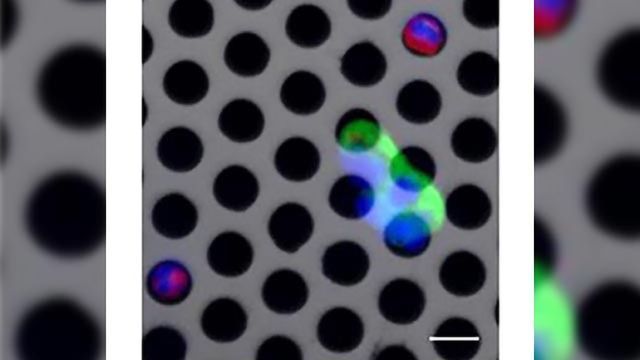Trending News
News

News
Stem Cell to Neuron... to Be, or Not to Be?
Researchers have unraveled a new mechanism controlling the switch between growth and differentiation of neural stem cells during brain development. A specific factor makes stem cells "deaf" to proliferative signals, causing them to differentiate into neurons and shape the marvelous complexity of our brain.

News
Electron Relationships in Alzheimer’s Protein Found to Be “Outside the Common Sense of Organic Chemistry”
The chemical interactions that give proteins their shape may be weaker and more numerous than previously recognized. These weak connections provide a new way for researchers to understand proteins that cause disease and help them gain insights into the fundamentals of chemistry.

News
First Assessment of Blood Abnormalities in Antarctic Penguin Colony
Scientists have completed the first study of immune and genetic stability among a colony of penguins living in a remote corner of southern Antarctica.

News
Looking at "Junk" DNA for Insights Into ASD and Stroke
A new study suggests that by analyzing noncoding mutations, researchers may be able to better understand not only ASD but a variety of conditions, ranging from neurological disorders to heart disease.

News
Never-ending Geometric Patterns Made From…Proteins?
Scientists can turn proteins into never-ending patterns that look like flowers, trees or snowflakes, a technique that could help engineer a filter for tainted water and human tissues.

News
Mapping Protein-Gene Interactions in Alzheimer’s Disease
Researchers have used the transcriptome -- the sum of all messenger RNA (mRNA) molecules expressed from genes -- to compare 414 study participants with clinically diagnosed and neuropathologically confirmed AD with an age-matched, non-demented control group from a community-based neuropathological study.

News
Fat Cells Play Role in Fatal Transformation of Melanoma
Researchers have discovered that fat cells are involved in the transformation that melanoma cells – from cancer cells of limited growth in the epidermis to lethal metastatic cells attacking patients' vital organs.

News
Revolutionizing the Treatment of Cancer With Lab-on-a-Chip
A new generation of pathology labs mounted on chips is set to revolutionize the detection and treatment of cancer by using devices as thin as a human hair to analyze bodily fluids.

News
Toxin in Bacteria Hijacks and Modifies Human Proteins
A team of scientists discovered that the toxin SidJ in Legionella bacteria enforces a unique modification on human proteins and helps legionella grow inside human cells.

News
Gene Loss 2 Million Years Ago May Explain Why Humans Are Prone to Heart Attacks
Researchers say the loss of a single gene two to three million years ago in our ancestors may have resulted in a heightened risk of cardiovascular disease in all humans as a species, while also setting up a further risk for red meat-eating humans.
Advertisement




